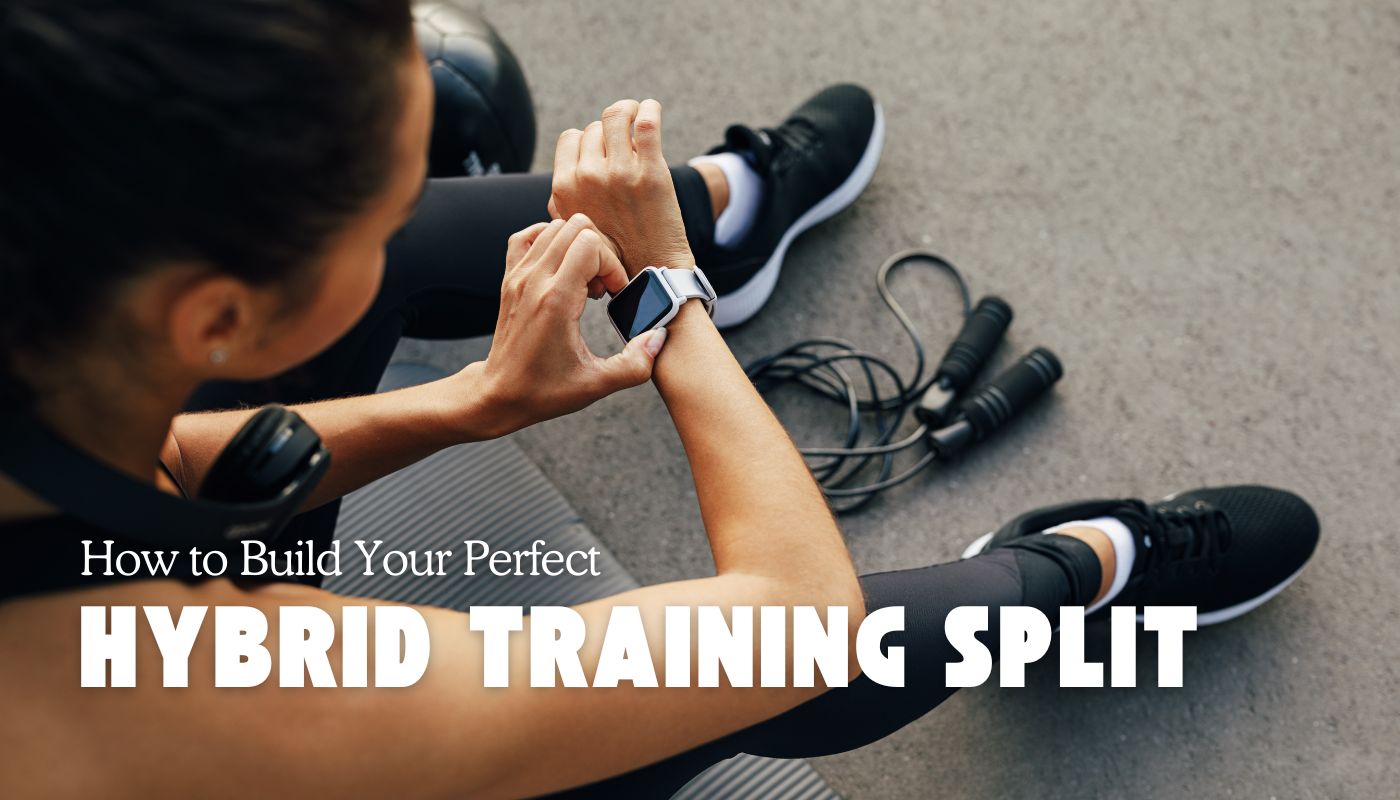If you want to become a hybrid athlete or aspire to train like one, you have to build a hybrid training plan that will help you reach your goals. Creating the right training plan will keep you consistent and motivated, ensuring you make progress without feeling overwhelmed or burned out.
But how do you structure your training so you can do all at once? Let’s break it down step by step.
1. Set Your Goals
The main goals of a hybrid athlete are strength and endurance, but they can mean different things to different people. Do you want to lift like a powerlifter or just build overall strength? Do you want to run like a marathoner or simply improve your endurance for sports? To create an effective training plan, you need to define your priorities and focus on what matters most to YOU.
The best approach is to have one main goal—whether it’s getting stronger, building endurance, or balancing both—and structure your training around it.
Hybrid training isn’t one-size-fits-all. Your split should match YOUR goals and what excites you the most.
Ask yourself:🤔
- Do I want to focus more on strength or endurance—or balance both equally?
- What do I want to improve the most? (Your strength? Your stamina? Overall fitness? Explosive power?)
- What do I enjoy the most? (Lifting weights? Running? Low Impact workouts? Team sports? Outdoor sports?)
- What I want to achieve in my fitness journey? (Run a half marathon? Lift 2x my bodyweight? Simply feel good and be fit?)
By answering these key questions, you’ll gain clarity on what truly matters to you and what type of training excites you the most. For example, if you love running and want to improve your pace, your priority should be scheduling runs throughout the week while incorporating strength training that supports your running performance. Focus on building lower body strength with exercises like squats, deadlifts, lunges, and calf raises to enhance power and endurance.
However, planning smart is just as important—doing an intense leg workout right before a long run? The worst idea you can have. Your legs will be fatigued, and that run will be pure PAIN (trust me, you don’t want that).
So, the key to building an effective hybrid training plan is setting clear goals and prioritizing what matters most to you. Having a goal to work toward will keep you motivated, structured, and excited to train.
2. Look at your schedule
Training like a hybrid athlete can be time-consuming, especially if you love multiple sports. Between gym sessions, running, volleyball, and hiking with friends, it can feel overwhelming to fit everything into a busy schedule. That’s why it’s crucial to be realistic about how much time you have and build a training plan that works for you.
And here’s the thing—it’s completely okay if you can’t train five days a week. A solid three-day training schedule can still bring great results. Not every week has to be intense; some weeks can be lighter, and that’s perfectly fine. As long as you’re incorporating both strength and endurance in some form, you’re making progress. 😉
Some people say, “I just don’t have time to work out.” And honestly? That’s just an excuse. You don’t need three-hour gym sessions or heavy lifting every day. A focused 45-minute workout is more than enough to build strength, and a quick 5K run takes just about 30 minutes. Even a brisk walk can improve your endurance.
| If you usually do… | Try this instead… |
| 2-hour gym session | 45-minute home workout with your body weight |
| 10km run (1+ hour) | 20-minute short run |
| Long weekend hike (4+ hours) | 45-minute stair climb or incline treadmill walk |
| 1-hour yoga class | 15-minute mobility/stretching session at home |
My tip? Find ways to add movement to your daily routine. Skip the elevator and take the stairs or get off a few bus stops early and walk home.
3. Listen to your body
Training hard and staying consistent is amazing! You should push your limits and step out of your comfort zone regularly. But remember, you’re not a machine. You’re human, and your body gives you signals when it’s time to slow down. While the human body is capable of incredible endurance, constantly overloading it and ignoring the need for rest can lead to burnout and injuries.
Your training plan doesn’t have to be rigid, it should adapt to your energy levels, health, and lifestyle. Some weeks will be intense, others might require more recovery. If you’re injured, rest. If you’re feeling exhausted, adjust. And for women, syncing training with the menstrual cycle can make workouts more effective and enjoyable.
It is okay to take a break. Rest days are not setbacks—they’re essential!
When starting hybrid training, ease into it. If you jump in too hard, you risk burning out before you even build a habit. Begin with just three sessions per week, allowing your body to adjust and recover properly. Over time, as training becomes part of your routine, you can gradually increase the intensity and frequency while staying in tune with what your body needs.
To wrap it up, building a hybrid training split is all about knowing your goals, managing your time, and listening to your body. There’s no perfect formula—what works for one person might not work for another. The key is to create a plan that excites you, keeps you consistent, and helps you grow stronger and more resilient over time.
Stay tuned for next week! I’ll be sharing with you some examples of how a hybrid training split can look in real life and how I am balancing different sports during the week. <3
Follow my content on social media: Instagram, TikTok, YouTube
Catch up on my last posts:
My Version of Hybrid Training: How to Balance Strength, Endurance, and Fun!
The Benefits of Hybrid Training for Women
👉 Next up: My Weekly Hybrid Routine
💬 What’s your biggest challenge when it comes to balancing multiple sports? Let me know in the comments!!
“Images by Canva Pro”




I like this content, I also believe in these concepts 😀